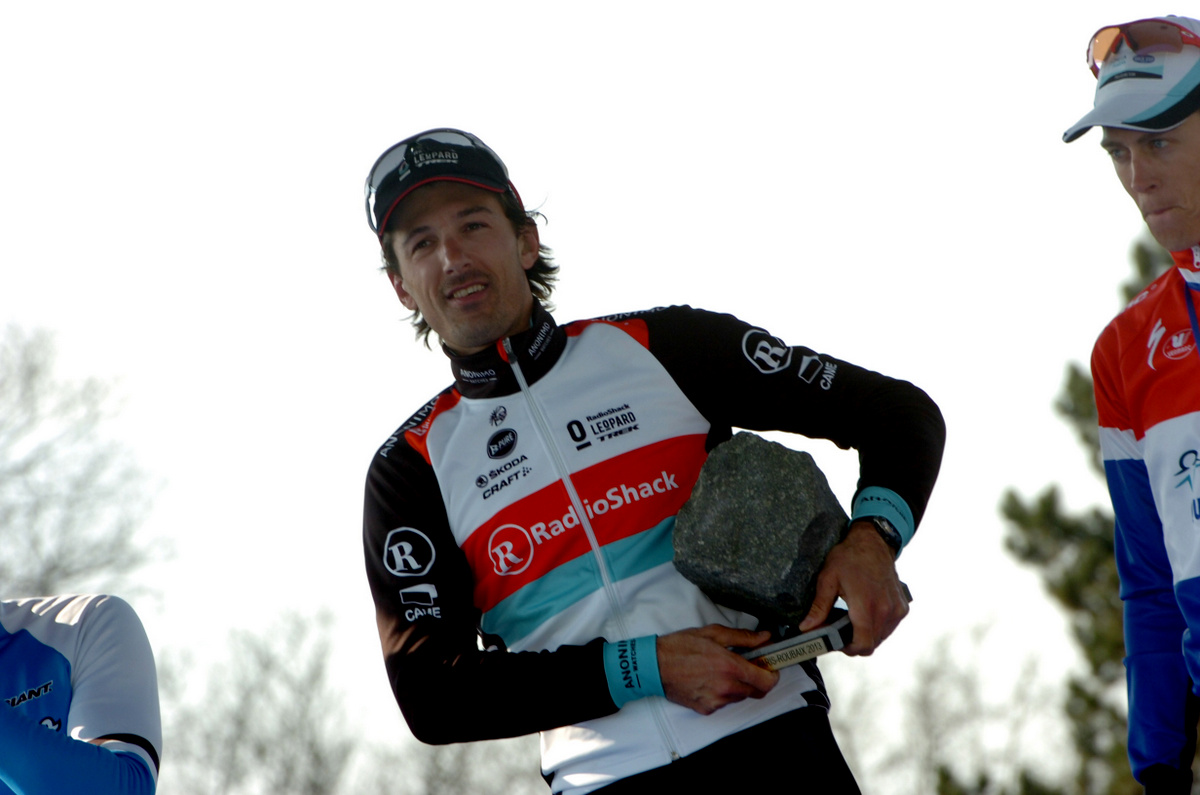US carbon fibre specialists Parlee have launched their first aero road bike, the ESX, with a unique ‘Recurve’ tube profile and adjustable headtube.
The world launch at Bespoke Cycles in Farringdon, London – a stone’s throw from RoadCyclingUK HQ – saw the machine unveiled for the first time by the company’s founder, Bob Parlee. The bike is named after the wind-swept Essex County, north of Boston Massachusetts, where Parlee are based.
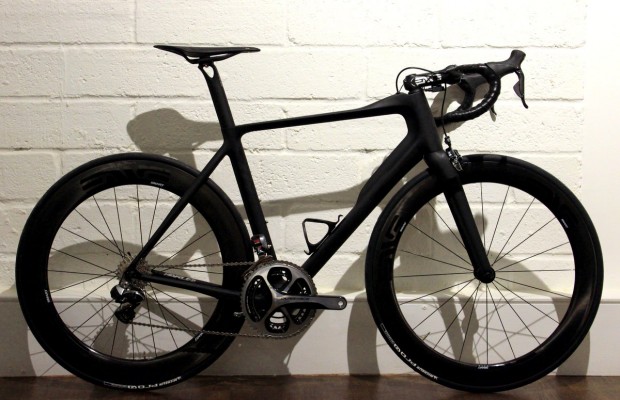
It’s an innovative design whose most striking feature is the ‘Recurve’ tube profile. The patent-pending design is what Parlee call a ‘fluted tail’ and is a significant departure from the round tubes, connected in straight lines, which characterise the rest of the range.
‘Recurve’ is used on the fork, headtube, downtube, toptube and seatpost (which also has a super-sleek integrated clamp), and is influenced by Bob Parlee’s experience, prior to founding Parlee Cycles, in designing and fabricating boats, and creating shapes that move through water with optimal efficiency. It’s been applied here, however, in order for Parlee to combine low drag with stiffness and comfort.
“Initially I was playing around with similar tube shapes to our time trial bike,” Bob Parlee told RoadCyclingUK. “Then I started experimenting with this shape, which we call the ‘Recurve’.
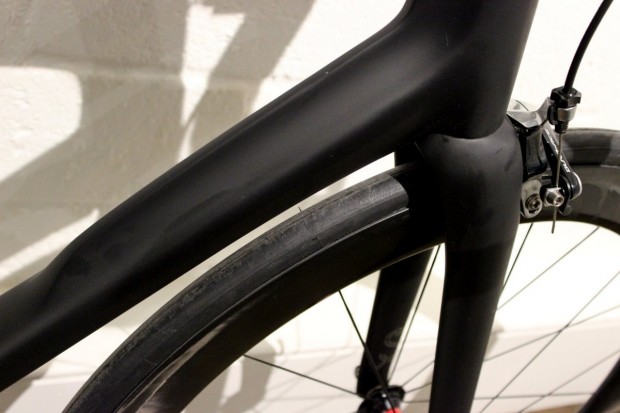
“One of our original prototypes had the shape on the entire length of the downtube but we then realised that if we wanted this to feel like a Parlee road bike then it wasn’t going to come in a tube like that.”
Parlee have developed a reputation for high-end, carbon fibre frames with a superb ride quality and that’s not something they were willing to sacrifice in the pursuit of aero gains.
“It’s a bike we wanted to have an aero advantage, but also to feel like a road bike, and to come in at a reasonable weight,” said Parlee of the ESX, which has a claimed frame weight of 950g. “That was the goal – to tick all three boxes.
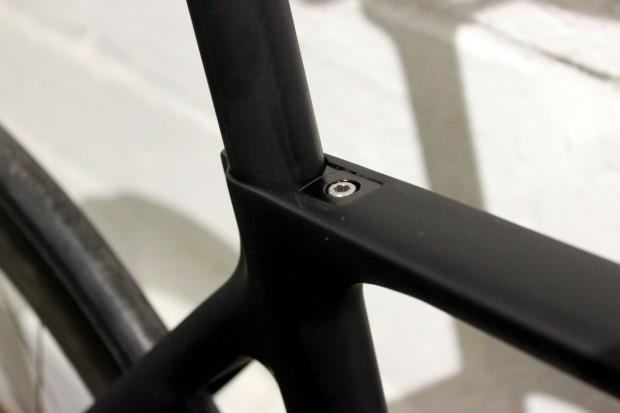
“One third of the bike is essentially dedicated to aerodynamics, then two thirds to ride characteristics while still keeping a shape which is more aero than a round tube, which is why we’ve used the truncated profile elsewhere.
“The nice thing about this bike is that it’s very good into the wind, but it starts to get better off the wind. It behaves very well in terms of off-angle wind direction. My goal has always been to build bikes which don’t always want to go in a straight line, bikes that can turn and adjust with the wind and road.”
How good into the wind? “It’s not as aero as a full airfoil tube profile, but it’s more aero than the truncated [Kammtail] shape that a lot of aero road bikes use,” said Parlee.
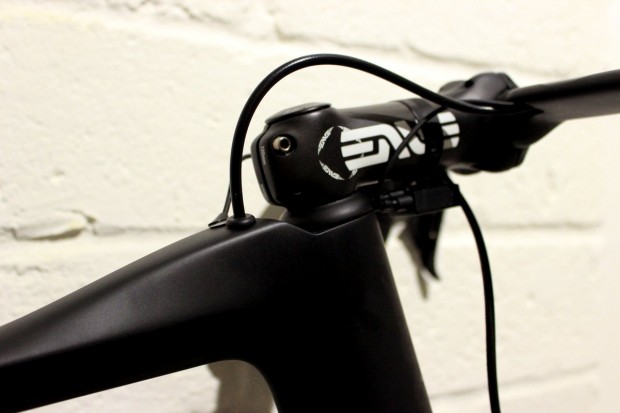
Parlee put the ESX head-to-head with their Z5 road bike and two rivals aero bikes, the Cervelo S5 and the Trek Madone 5.9, at the Wright Brothers Wind Tunnel at the Massachusetts Institute of Technology, testing with a bottle and cage, and without.
In short and using the mean drag across five yaw angles from zero to 15 degrees, with no bottle or cage, the ESX produced less drag than the Z5 and Madone 5.9, but more than the S5, and with a bottle and cage it produced less drag than all three (though it was only marginally ‘faster’ than the S5).
To quantify that, if riding a 40km time trial at 200 watts, with a bottle and cage, Parlee claim you will save between 70 and 116 seconds by going aero and switching to the ESX from the Z5. As ever, we have no way or verifying that data.
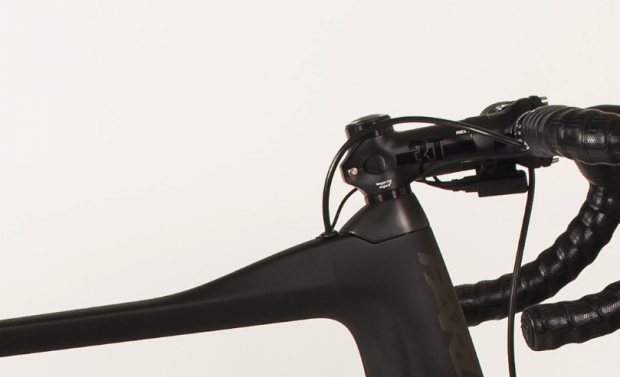
“We went to the wind tunnel and the bike performed exceptionally well but we were also able to manipulate the carbon fibre to ensure we have the right ride characteristics,” said Parlee.
“There were ten iterations of the layup of the bike before were got to place where we were happy with it. That’s the feedback our test riders have come back with it: firstly, how quiet it is, and second how good it is to ride, it doesn’t beat you up.”
Usability is key to the ESX and that’s most evident in the adjustable ‘Flexfit’ headtube, which uses an integrated aero spacer on top of the headtube to create a ‘tall’ version of the frame. That essentially gives the ESX two headtube sizes, described as race and endurance by the company’s sales and marketing director, Tom Rodi.
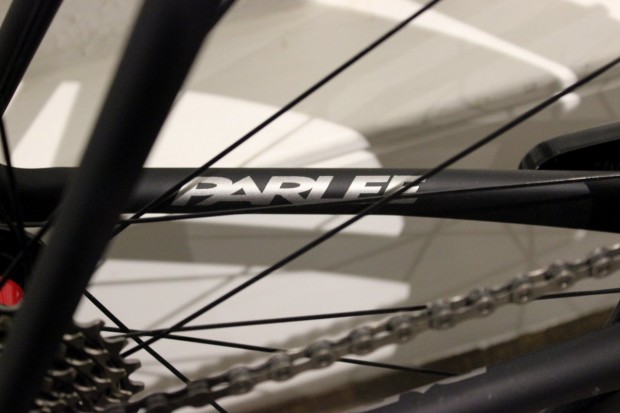
“Aero performance, weight and all-out speed are part of the story but the bike has to fit,” Rodi told RoadCyclingUK.
“A lot of people are coming into performance riding later in life and to have that option is important. To have that ability to remove the spacer and get your handlebar lower, or to add the spacer and have it higher without exposing a stack of spacers is important.”
The ESX is available in five frame sizes but Parlee say the ‘Flexfit’ essentially doubles that to ten. For example, a ML frame has a 56cm toptube and 17.3cm headtube, boosted to a lofty 19.9cm with the 26mm ‘Flexfit’ cap.
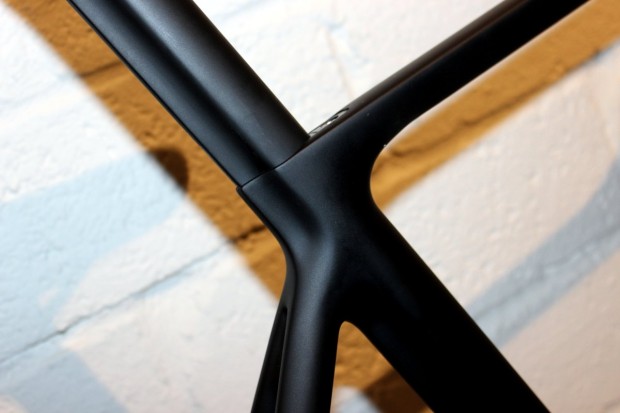
“We were pretty early in embracing taller headtubes,” added Rodi. “We have a good understanding of what a real world handlebar position should be, relative to the bottom bracket, and most people are definitely happier in a neutral position. That’s a big part of the design.”
The machine we saw at Bespoked Cycles used Shimano’s direct mount Dura-Ace brakes, with the front brake subtly integrated into the fork crown, and the rear hidden behind the bottom bracket. Parlee’s decision to use those brakes, rather than a front brake fully integrated or hidden behind the fork, was also influenced by a desire to make the ESX an aero bike for real-world riding.
“A big surprise for us was the direct mount Shimano Dura-Ace rear brake,” said Rodi. “In terms of adjustment, centering, modulation and feel, it’s just like having a brake on the seatstays. I don’t think there’s any drawback.”
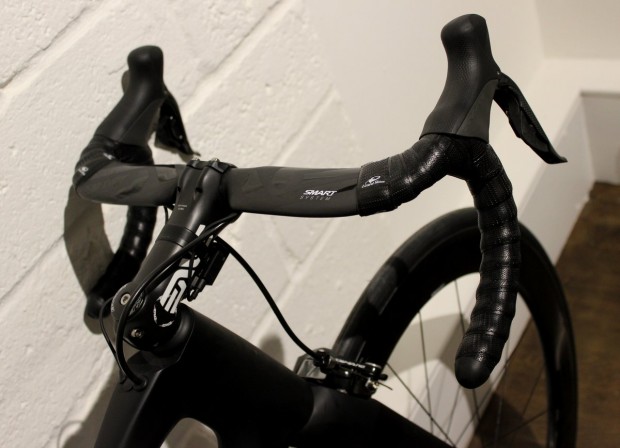
The frame also has clearance for 28mm tyres, though Rodi told us he has squeezed in 31mm tyres, while it has cable routing for mechanical and electronic groupsets, and can accommodate Shimano’s new internal Di2 battery.
All that’s left to mention, then, is the price – £3,999 for the frameset and available from December.
Website: Parlee Cycles



